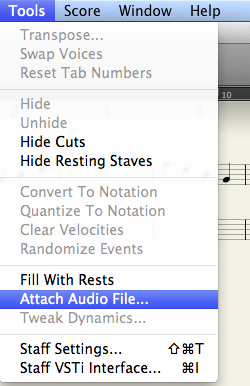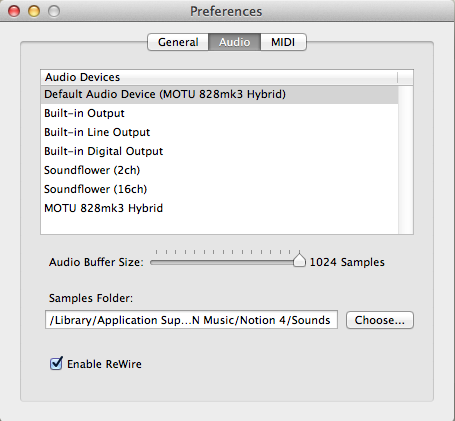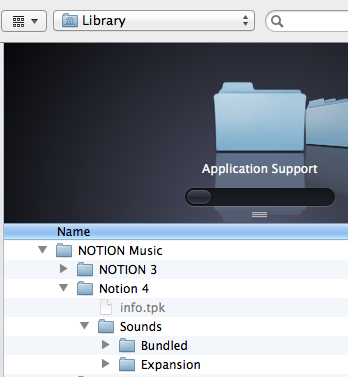Kanute wrote:Thank you again for this superb information!

I didn't even know that such advanced things were possible to do on a personal computer, nor do I know anything about the software you refer to. So I understand there will be an investment as well as a learning curve to do things like you describe.
By the way, to determine the tempo of my audio files I just use an external, handheld metronome, as the files have a precise and steady tempo.
Kanute
Excellent! 
Regarding the advanced aspects of digital music production, with the correct set of equipment (as described below in a general way), you can do anything you hear at a motion picture theater, on television, and on radio, and for the most part you can do it by yourself . . .
The only things you cannot do easily by yourself are some types of singing, where for example I am baritone or tenor, so doing any lyrical soprano singing pretty much requires hiring a lyrical soprano for solo work, but there are sampled sound libraries and specialized virtual instruments for choirs, so I can do choirs, and the various technologies for creating realistic solo vocalists are coming along nicely in surprising ways, hence in a few years it is within the realm of possibility to have virtual solo vocalists that are very realistic and do not sound like they are singing in the Taj Mahal, which is pretty much the way virtual choirs tend to sound at present . . .
Regarding the time required to make sense of all this stuff, in early-2010 all I knew about virtual instruments and music notation software was that IK Multimedia had a product named "Miroslav Philharmonik" that appeared to have something to do with being able to play
Flamenco percussion--which I needed for a Flamenco song I was doing at the time--so I got it and then discovered that it required software for doing music notation, which is when I discovered NOTION 3, and approximately three years later I am becoming reasonably proficient in it, so the idea that anything happens "overnight" for most people is a grand delusion, because it takes time to lean all this stuff, and while I knew enough about music notation to sight-sing the types of music that liturgical boys choirs sing, I had not done anything with music notation for decades, so it took a while to get up to speed on music notation, which curiously was made much easier by virtue of being able to do everything with soprano treble clefs in NOTION 3 and NOTION 4, courtesy of the staff transposing functionality, where for example I can create a soprano treble staff but instruct NOTION 4 to play the notes two octaves lower than notated, which makes the notes sound correct for electric bass and string bass, hence no bass clefs, cello clefs, viola clefs, woodwind stuff, and so forth and so on. Hence here in the sound isolation studio there are 12 notes in an octave unless one is working with quarter tones, in which case there are 24 notes in an octave; and there are 10 or so octaves, which keeps everything very simple. Bass notes are no different from soprano notes, other than being a few octaves lower, and since only soprano treble clef makes sense to me, everything is soprano treble clef but is played the same, lower, or higher depending on the octaves I want to use . . .
[
NOTE: I do not understand much Spanish, so I used Google Translate for the title, and if it makes no sense or whatever, then it is not my fault. The rhythm pattern is standard Bulería except for the interlude which is a custom 36-beat rhythm pattern that I call "Surrealería" . . . ]
"Maríta de la Luna y Pablito el Petardo (No Es Tanto Lo Que Es Como Lo Que No Es)" (The Surf Whammys) -- MP3Switching focus for a moment, I have a handheld Sound Pressure Level (SPL) meter that I use to check the volume level in the sound isolation studio when I am mixing and mastering songs using the studio monitor system, where 85 dB SPL is the target level and is a safe listening level for several hours at a time. I allow a few peaks to be 90 to 95 dB SPL, but I minimize them, because the safe listening time when sound is louder than 85 dB SPL is very short, and anything much louder can do permanent ear damage, which fortunately I have avoided over the years . . .
I have an old style "pyramid" mechanical metronome, but it is not very precise, so I use the computer metronome . . .
I explained the more precise technique, because it is useful to know that it exists, and it is a good way to provide some information on the Melodyne Editor (celemony), which is a very useful tool for quite a few activities, and relative to a few other topics in this FORUM, the Melodyne Editor can be used to "sculpt" performances on a note-by-note basis, which includes instruments and voices, where voices are what most folks consider when thinking about this type of software, but it also is very useful for instruments, where for example you can fine-tune acoustic guitar performances; violin performances; and pretty much any other instrument, which includes taking a performance in a natural minor key and
automagically "snapping" it to a major key, where so long as the notes are proximal or nearby, it does not sound artificial, as is the case with singing, where if a note is off by a half-step or perhaps whole-step, then you can adjust it and it will continue to sound natural, although you can create harmony voices, which typically involve larger intervals (thirds, fifths, and so forth) . . .
Regarding the cost of a complete system, if you play a few real instruments, then I think the cost is somewhere in the range of $15,000 to $25,000 (US), but at minimum I think you need a professional music workstation or synthesizer like the KORG Triton Music Workstation (88 Keys), which in some respects is a bit antiquated today but nevertheless is full-featured and has very realistic weighted piano keys. If you play electric bass, electric guitar, and drums, then you probably already have them, but I include them in the total cost but at the higher value . . .
You also need a calibrated full-range studio monitor system, which I estimate at $1,500 to $2,000 (US) when you do it the way I recommend, where the key is that it needs to be able to have a flat equal loudness curve from 10-Hz to 20,000-Hz at 85 dB SPL, and the reason this is a requirement is that it is the only way you can be certain that what you hear is what is recorded and what happens as you are producing, mixing, and mastering the audio, and in this respect I would not be surprised if fewer than 10 percent of the folks doing digital music production actually have heard music played through a calibrated full-range studio monitor system, if only because there are no commercial-off-the-shelf (COTS) full-range studio monitor systems available on this planet at present, hence the only way to get one is to do a custom design, all of which is explained in one of my ongoing topics at the IK Multimedia FORUM . . .
The Fabulous Affordable Studio Monitor System Project (IK Multimedia FORUM)You also need various cables; some microphones; acoustic room treatments (which can be as simple as rolls of fiberglass insulation and cubes of compressed cellulose insulation); a powerful computer (where I strongly recommend Apple computers); an external digital audio and MIDI interface like the MOTU 828mk3; and a lot of software, including virtual instruments, sampled sound libraries, and effects plug-ins; and you need at least basic MIDI capabilities . . .
It is a lot of stuff, but the practical aspect is that you can get it in stages or steps, since it takes a while to make sense of each component, and if you got all of it at once, it would take from three to six months to get all of it installed, tested, and so forth, hence the smart way to do it is to have a
plan for the future that is based on getting various components in stages, steps, or phases and then pausing for a while at each milestone to understand how everything you have works, which can take a while . . .
And when it is spread over perhaps five or ten years, it is not so much each year, although there are a few large purchases that cannot be so easily spread over several years . . .
Sometime in the not so distant future, I am planning to write a technical book about all this stuff, and while there are many ways to do digital music production, I am most comfortable with the complete system for doing everything that I have tested and verified, which is the reason I am so specific about computers, hardware, software, and all the other components, which is fabulous . . .
Fabulous! 




